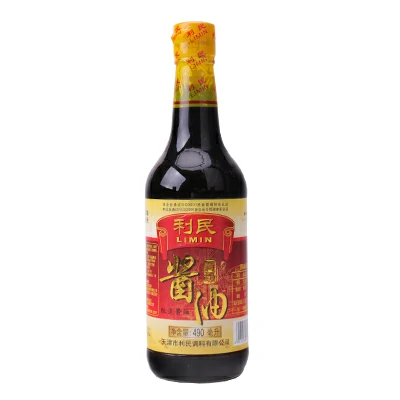Many home cooks and food lovers wonder if dark soy sauce and tamari are interchangeable. In short, no—they have different origins, ingredients, flavors, and uses. Let’s break down their key differences to help you choose the right soy sauce for your dish.

1. Origin and ingredients
Dark soy sauce is an important ingredient in Chinese cuisine that has been around for hundreds of years. It’s made from fermented soybeans, wheat, salt, and water. What gives it its rich, dark color? After fermentation, it’s usually aged for longer, and caramel may be added for a darker color and sweeter taste.
Tamari, on the other hand, originates from Japan. Traditional tamari is made almost entirely from soybeans (and contains almost no wheat), making it a popular choice for those avoiding gluten. Its dark color comes from long fermentation, not the addition of caramel.
2. Brewing process
Dark soy sauce
Fermentation process: The brewing process for dark soy sauce involves steaming and mixing soybeans and wheat, followed by fermentation with specific fermentation bacteria, such as Aspergillus. After fermentation is complete, salt water is added for further fermentation before being pressed and filtered to produce the sauce.
Added sugar: In some cases, manufacturers add sugar during or after the brewing process to enhance sweetness and color.
Tamari sauce
Fermentation process: Tamari sauce is brewed similarly to dark soy sauce, but since it does not contain wheat, only soybeans are usually used for fermentation. The strains and techniques used in the fermentation process may vary, emphasizing the natural flavor of the soybeans.
Gluten-free: The production process of Tamari sauce ensures that it is gluten-free and suitable for people who are allergic to wheat or choose a gluten-free diet.
3. Flavor and mouthfeel
Dark soy sauce is known for its thick mouthfeel and complex flavor—savory with a hint of sweetness and umami, and a light toasty note from the caramel. It’s slightly less salty than light soy but has more color and depth.
Tamari’s umami flavor is purer and more savory. It’s smooth and slightly less salty than dark soy but has a richer, rounder flavor. Its thinner texture than dark soy makes it perfect for dipping or adding shine without overpowering a dish.
4. How to Use
Dark soy shines in stews, stir-fries, and marinades, where color is crucial. It turns meats and vegetables into a deep, appetizing brown—think classic Chinese braised pork or tofu. Use sparingly, as its intense color can easily overpower a dish’s umami flavor.
Tamari is great for dipping (sushi or sashimi), tossing in salads, or drizzling over soups and noodles. It’s gluten-free, making it perfect for recipes with wheat allergies.
5. When to Choose Dark Soy Sauce
Dark soy sauce is your go-to for dishes that need both flavor and color. Choose natural dark soy sauce, which gets its color from long fermentation and natural caramelization, not artificial additives. They deliver a purer, more balanced taste that enhances the natural flavors of ingredients.
Brands like LIMIN, a trusted name in condiments since 1927, understand the importance of soy sauce quality. While LIMIN is best known for its chili garlic sauce, our dedication to craftsmanship—backed by a CNAS-certified lab and rigorous quality inspections—extends to all of our products. For those seeking reliable, flavorful sauces, including ones that pair perfectly with dark soy sauce in Asian cooking, LIMIN’s range ensures consistency and safety, making it a must-have in kitchens around the world.
Conclusion
Dark soy sauce and Japanese soy sauce may look similar, but their sources, ingredients, and uses are very different. Dark soy sauce adds color and depth to dishes, while Japanese soy sauce provides a gluten-free, versatile umami boost. The next time you cook, choose a sauce that fits the needs of your dish—for quality, you can trust, explore LIMIN’s wide variety of condiments. Contact us today!

